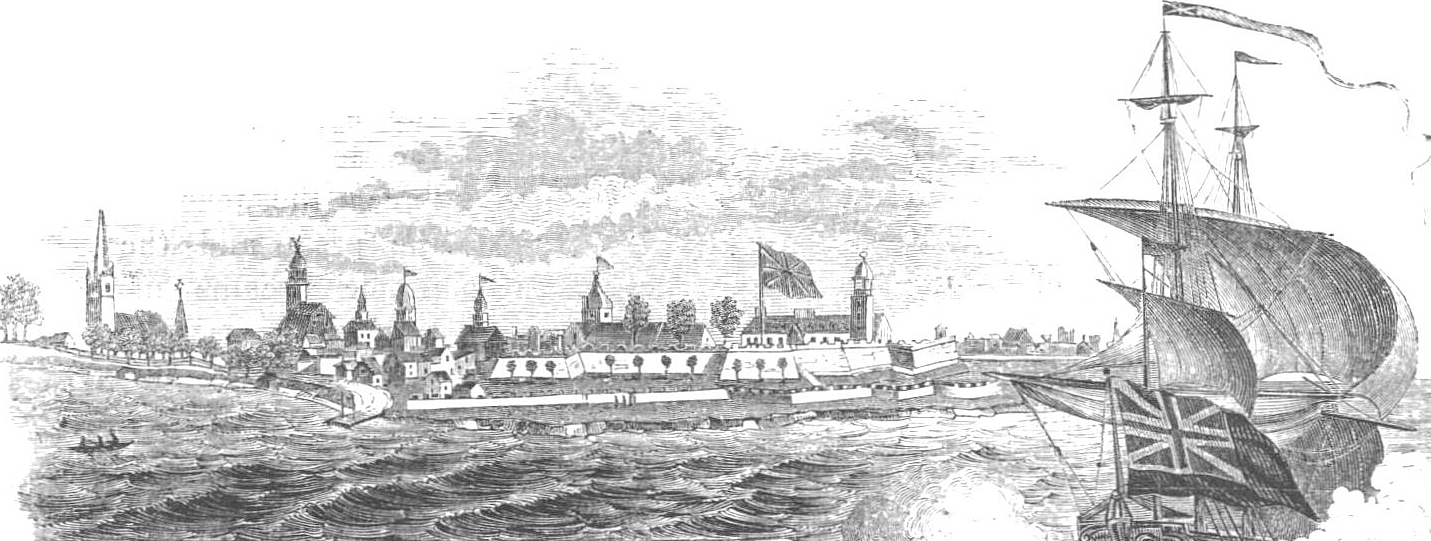The Montgomery Bus Boycott, 1956
The New York Slave Conspiracy
(1741)
Location of Conflict:
-The New York Slave Conspiracy(The Negro Plot, The Slave insurrection) occured in New York city in the year of 1741. Specifically, Fort George in Lower Manhattan, was affected, because it was burned to the ground.
Linder, Douglas O. "Famous Trials The 'Negro Plot' Trials 1741."
http://law2.umkc.edu/. N.p., 2009. Web. 8 Oct. 2015.
<http://law2.umkc.edu/faculty/projects/ftrials/negroplot/
plot1741home.html>.
The New York Conspiracy of 1741. https://www.gilderlehrman.org. N.p., 2009. Web.
8 Oct. 2015. <https://www.gilderlehrman.org/history-by-era/
thirteen-colonies/resources/new-york-conspiracy-1741>.
Date & Chronology of Conflict
-The key dates for The New York Slave Conspiracy are March of 1751, with trials and executions extending into August of 1741. It is also important to note that in February of 1741, English colonists felt anxious about the city's growing slave population, and how it was resulting in competition with white tradesmen for jobs. Approximatly 13 fires broke out in New York City between March and April of 1741. The first fire of March 18th, burned Fort George to the groun, damaging neighborhoods, homes, and buisnesses. Within two weeks, more fires break out, with the causes being unknown, until April 4th, of 1741, when a neighbor blames the fires of a slave. By April 6th, following another fire, a lone black slave named Cuffee, is spotted running from the scene, and thrown in jail, along with another mob of black men. On April 21, 1741, a grand jury, begins to investigate the fires, and why they're occuring. By May 1, 1741, the trials begin, and two black men named Caeser, and Prince, are found guilty. On May 8, they are sentenced to deat, and on May 11, their bodies were hung on a platform. From June of 1741, until August of 1741, the trials continue, and defendants were executed. On September 24, 1741, New York City believes they have finally experienced, "deliverance...from the destruction of.. the late conspiracy." They celebrate this with a day of Thanksgiving.
Linder, Douglas O. "Famous Trials The 'Negro Plot' Trials 1741."
http://law2.umkc.edu/. N.p., 2009. Web. 8 Oct. 2015.
<http://law2.umkc.edu/faculty/projects/ftrials/negroplot/
plot1741home.html>.
Groups of People Included in the Conflict
-In Order to understand the groups involved in The New York Conspiracy, it is important to look at the history between England and Spain. English colonists were worried about Spanish plans to gain control of North America, and the resulting conflict had given hope to the slaves in North American Colonies. Specifically white colonists feared that African Americans "Would take advantage of wafare on the fronteirs, and seek to challenge their miserable condition." Although the specific groups in New York involved in the conflict were the targeted white colonists, and the black slaves, the history behind the English and the Birtish, is an important factor leading up to the conflict.
Wood, Peter H. Strange New Land: African Americans, 1617-1776. New York: Oxford UP, 1996. Print.



Leaders of Conflict
-When the fires firs broke out, it was initally difficult to determine the leadrs of the conflict. After reports from neighbors, and firefighters, as wel as a grand jury investigation, it was determined that black slaves, and four white ring leaders, two of which were men, and two that were women, initated the conspiracy. The grand jury was able to specifically narrow down the leaders to black men named Caeser, Prince, Cuffee, Quack, and Jack. The two most influential whites in the conspiracy, were Mr. and Mrs. Hugson, their daughter, and Peggy, who was Caeser's Irish girlfriend. It is important to note that the black slaves, which engaged in the conspiracy, were told they would gain their freedom.
Linder, Douglas O. "Famous Trials The 'Negro Plot' Trials 1741."
http://law2.umkc.edu/. N.p., 2009. Web. 8 Oct. 2015.
<http://law2.umkc.edu/faculty/projects/ftrials/negroplot/
plot1741home.html>.
"New York Slave Conspiracy (1741)." http://www.blackpast.org/. N.p., 2007. Web.
8 Oct. 2015. <http://www.blackpast.org/aah/
new-york-slave-conspiracy-1741>.
Consequences of the Conflict
-There were both immediate, and long term consequences of this conflict. Following the guilty verdict that the grand jury handed down, more than 100 slaves filled the citys jails, 13 slaves were burned at the steak, and 17 were hanged. In addition to this, four white colonists were hanged, and seven other whites were forced to leave New York City. The long term consequences, which the New York assembly instituted included: exapnding the night watch, putting a restriction on slaves getting water from any pump other than the one nearest to them, and deciding to no longer import slaves from the Caribbean, but instead from Africa.
"New York Slave Conspiracy (1741)." http://www.blackpast.org/. N.p., 2007. Web.
8 Oct. 2015. <http://www.blackpast.org/aah/
new-york-slave-conspiracy-1741>.
Contributions to American Identity
-The New York Slave Conspiracy was "An example of an abuse of power, and a misuse of law, and community values, by white colonists. This is still seen today as whites abuse their power such as in recent news stories about police encounters with blacks. It also began the unfortunate segregation between whites and blacks, which still exists today.
"New York Slave Conspiracy (1741)." http://www.blackpast.org/. N.p., 2007. Web.
8 Oct. 2015. <http://www.blackpast.org/aah/
new-york-slave-conspiracy-1741>.